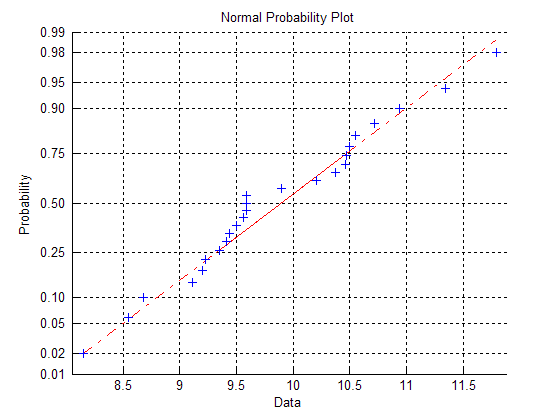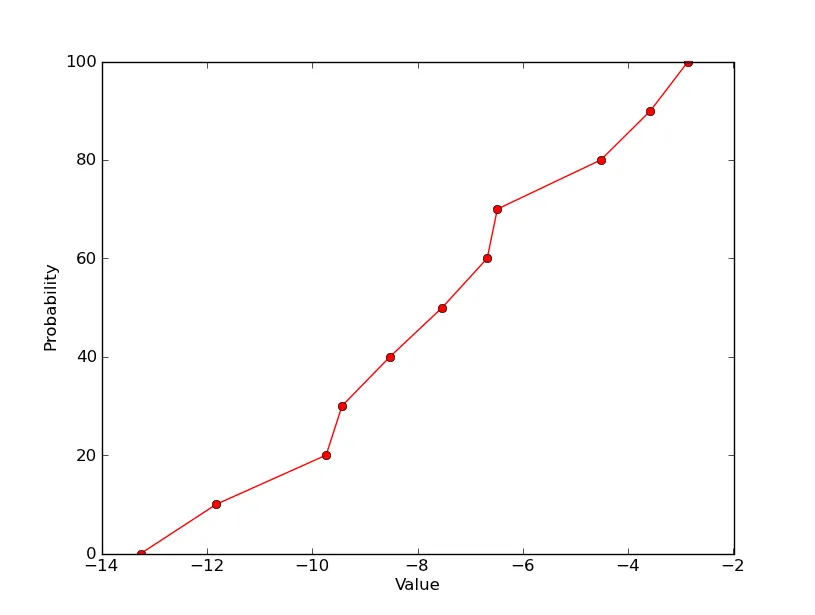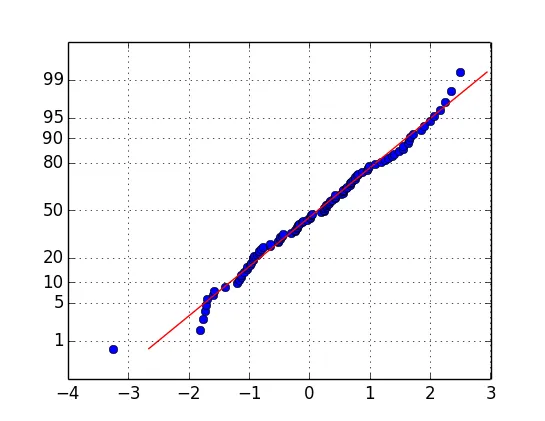有没有Python中类似于MATLAB的normplot函数的等价函数?也许是在matplotlib中实现的?
MATLAB语法:
x = normrnd(10,1,25,1);
normplot(x)
给出:

我尝试使用matplotlib和numpy模块来确定数组中值的概率/百分位数,但输出图的y轴刻度是线性的,与MATLAB的图相比。
import numpy as np
import matplotlib.pyplot as plt
data =[-11.83,-8.53,-2.86,-6.49,-7.53,-9.74,-9.44,-3.58,-6.68,-13.26,-4.52]
plot_percentiles = range(0, 110, 10)
x = np.percentile(data, plot_percentiles)
plt.plot(x, plot_percentiles, 'ro-')
plt.xlabel('Value')
plt.ylabel('Probability')
plt.show()
给出:
 否则,第一个图中的刻度怎么能够调整呢?
否则,第一个图中的刻度怎么能够调整呢?谢谢。
